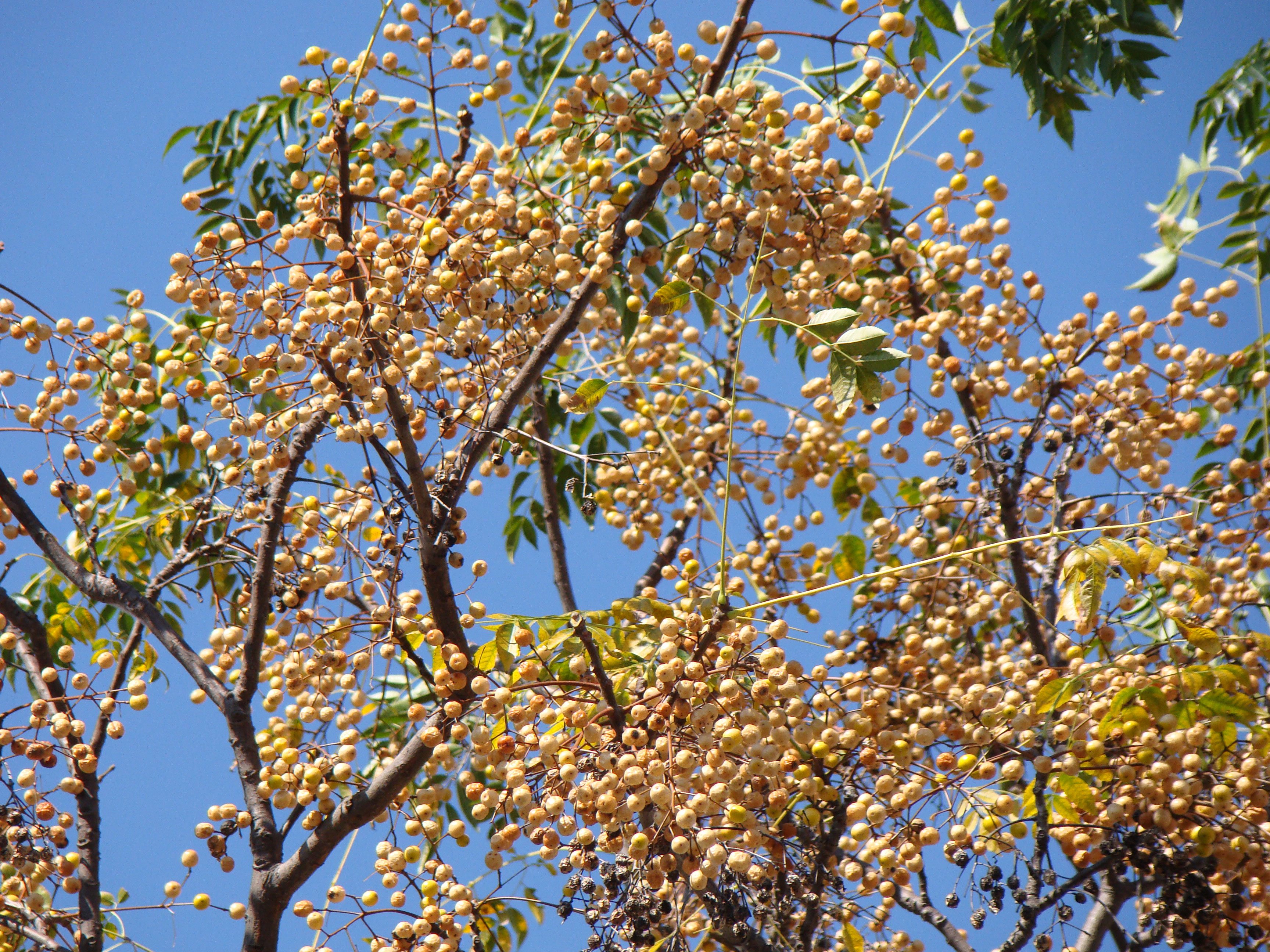
Native to Pakistan, India, southeast Asia, and Australia, chinaberry tree information tells us it was introduced as an ornamental specimen to the United Sates in 1930 and, for a period of time, became the darling of landscapers in the southern United States. Today the chinaberry tree is considered something of a pest due to its reseeding propensity and easy naturalization.
What is Chinaberry?
Chinaberry is a member of the Mahogany family (Meliaceae) and is also known as “China Tree” and “Pride of India.” So, what is chinaberry tree? Growing chinaberry trees (Melia azedarach) have a dense spreading habitat attaining heights of between 30 to 50 feet tall (9-15 m.) and hardy in USDA zones 7 through 11. Growing chinaberry trees are prized as shade trees in their native habitat and bear pale purple, tube-like blooms with a heavenly scent much like southern magnolia trees. They are found in fields, prairies, along roadsides, and at the edge of wooded areas. The resulting fruit, marble sized drupes, are light yellow gradually becoming wrinkled and white over the course of the winter months. These berries are toxic to humans when eaten in quantity but the juicy pulp is enjoyed by many bird varieties, often resulting in rather “drunken” behavior.
Additional Chinaberry Tree Information
The leaves of the growing chinaberry tree are large, about 1 ½ feet long (46 cm.), lance-shaped, slightly serrated, dark green atop and paler green below. These leaves smell nowhere near as enchanting as the flower; in fact, when crushed they have a particularly obnoxious odor. Chinaberry trees are resilient specimens and can be quite messy from the dropping berries and leaves. They spread easily, if allowed, and, as such, are classified as an invasive tree in the southeastern United States. This prolific mahogany member grows rapidly but has a short life span.
Chinaberry Uses
As mentioned above, the chinaberry is a valuable shade tree in its endemic regions due to its large, spreading canopy. Chinaberry uses in the southeastern regions of the United States have been used for just this attribute and were commonly added to the home landscape prior to the 1980's. The most commonly planted variety is the Texas umbrella tree with a slightly longer life span than other chinaberries and a lovely, distinct rounded shape. Chinaberry fruit can be dried, dyed, and then strung into necklaces and bracelets as beads. At one time the seeds of the drupes were used as a narcotic; refer to the toxicity of the fruit and the tipsy, gorging birds. Today, the chinaberry is still sold in nurseries but is less likely to be utilized in landscapes. Not only is it a threat to the natural ecosystem by its encroaching habit, but its messy and, more importantly, shallow root systems tend to clog drains and damage septic systems. Growing chinaberry trees also have weak limbs too, which break easily during severe weather, creating yet another mess.
Chinaberry Plant Care
If, after reading all the above information, you decide you just must have a specimen of the chinaberry in your garden, purchase a disease free certified plant at the nursery. Chinaberry plant care is not complex once the tree is established. Plant the tree in full sun in most any soil type within the USDA zones 7 to 11. The tree should be watered regularly, although it will tolerate some drought and needs no irrigation through the winter months. Prune your chinaberry tree to remove root and shoot suckers and maintain the umbrella-like canopy.
Sign up for the Gardening Know How newsletter today and receive a free copy of our e-book "How to Grow Delicious Tomatoes".

Amy Grant has been gardening for 30 years and writing for 15. A professional chef and caterer, Amy's area of expertise is culinary gardening.
